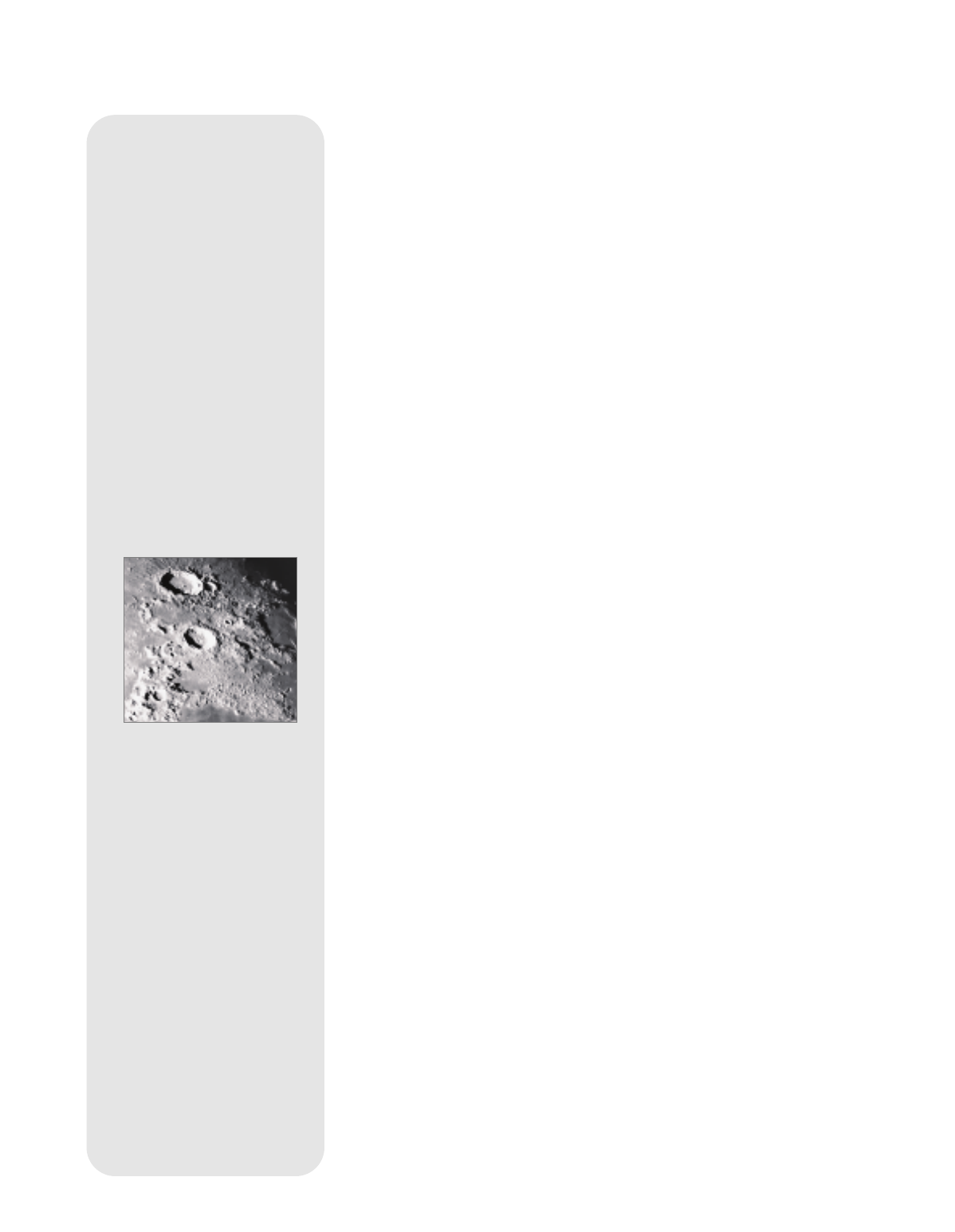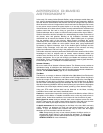
57
APPENDIX D:BASIC
ASTRONOMY
Fig. 53: The Moon. Note
the deep shadows in the
craters.
In the early 17th century Italian Scientist Galileo, using a telescope smaller than your
ETX, turned it skyward instead of looking at the distant trees and mountains. What he
saw and what he realized about what he saw, has forever changed the way mankind
thinks about the universe. Imagine what it must have been like being the first human
to see moons revolve around the planet Jupiter or to see the changing phases of
Venus! Because of his observations, Galileo correctly realized Earth's movement and
position around the Sun and in doing so, gave birth to modern astronomy. Yet
Galileo's telescope was so crude, he could not clearly make out the rings of Saturn.
Galileo's discoveries laid the foundation for understanding the motion and nature of
the planets, stars and galaxies. Building on his foundation, Henrietta Leavitt
determined how to measure the distance to stars, Edwin Hubble gave us a glimpse
into the possible origin of the universe, Albert Einstein unraveled the crucial
relationship of time and light and 21st-century astronomers are currently discovering
planets around stars outside our solar system. Almost daily, using sophisticated
successors to Galileo's telescope, such as the Hubble Space Telescope and the
Chandra X-Ray Telescope, more and more mysteries of the universe are being
probed and understood. We are living in the golden age of astronomy.
Unlike other sciences, astronomy welcomes contributions from amateurs. Much of the
knowledge we have on subjects such as comets, meteor showers, double and
variable stars, the Moon and our solar system comes from observations made by
amateur astronomers. So as you look through your Meade
ETX telescope, keep in
mind Galileo. To him, a telescope was not merely a machine made of glass and metal,
but something far more—a window of incredible discovery.
Autostar Glossary
Be sure to make use of Autostar’s Glossary feature. The Glossary menu provides an
alphabetical listing of definitions and descriptions of common astronomical terms.
Access directly through the Glossary menu or through hypertext words embedded in
Autostar. See
GLOSSARY MENU, page 26, for more information.
The Moon
The Moon is, on average, a distance of 239,000 miles (380,000km) from Earth and is
best observed during its crescent or half phase when Sunlight strikes the Moon’s
surface at an angle. It casts shadows and adds a sense of depth to the view (
Fig. 53).
No shadows are seen during a full Moon, causing the overly bright Moon to appear
flat and rather uninteresting through the telescope. Be sure to use a neutral Moon
filter when observing the Moon. Not only does it protect your eyes from the bright glare
of the Moon, but it also helps enhance contrast, providing a more dramatic image.
Using your ETX model, brilliant detail can be observed on the Moon, including
hundreds of lunar craters and maria, described below.
Craters are round meteor impact sites covering most of the Moon’s surface. With no
atmosphere on the Moon, no weather conditions exist, so the only erosive force is
meteor strikes. Under these conditions, lunar craters can last for millions of years.
Maria (plural for mare, seas) are smooth, dark areas scattered across the lunar
surface. These areas are ancient impact basins that were filled with lava from the
interior of the Moon by the depth and force of the meteor or comet impact.
12 Apollo astronauts left their bootprints on the Moon in the late 1960’s and early
1970’s. However, no telescope on Earth can see these footprints or any other
artifacts. In fact, the smallest lunar features that may be seen with the largest
telescope on Earth are about one-half mile across.
Note: Except during its early or late crescent phases, the Moon can be an
exceptionally bright object to view through the telescope. To reduce the
brightness and glare, use the #905 Variable Polarizing Filter (see the
MEADE
GENERAL CATALOG
for more information).


















